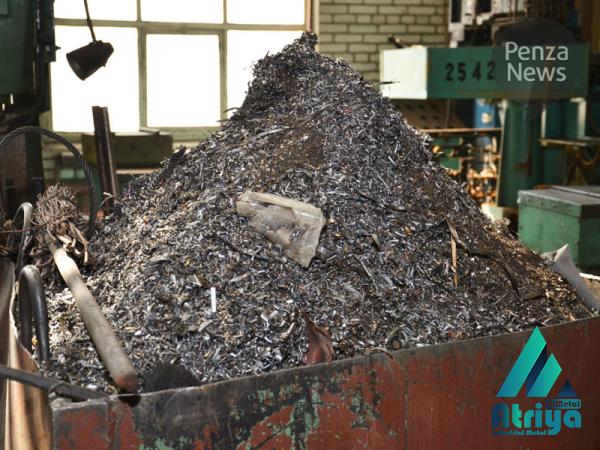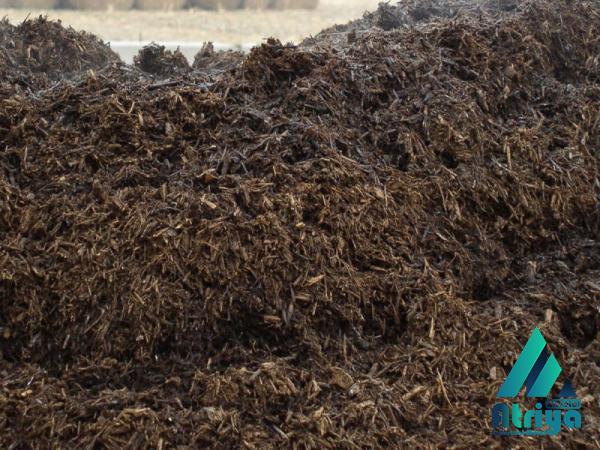Dried sewage sludge, also known as biosolids, is the solid residue left behind after wastewater treatment processes. While traditionally considered a waste product, advancements in technology and growing environmental concerns have shifted the focus towards utilizing dried sewage sludge as a valuable resource. This article provides an overview of dried sewage sludge, its composition, treatment methods, and the various applications and benefits associated with its use. 1. Composition of Dried Sewage Sludge: Dried sewage sludge is comprised of organic and inorganic materials, resulting from both domestic and industrial wastewater. The composition includes organic matter, such as proteins, carbohydrates, and fats, as well as inorganic substances including nitrogen, phosphorus, potassium, and trace elements. Careful processing and treatment are necessary to remove harmful substances and reduce pathogens to ensure its safe utilization.
iron
 2. Treatment Techniques: Several treatment techniques are employed to transform raw sewage sludge into dried form. These techniques include thickening, mechanical dewatering (such as centrifugation and belt filter presses), and thermal drying methods. The overall goal of these treatment processes is to reduce the moisture content, eliminate pathogens, and stabilize the organic matter to create a safer and more manageable product. 3. Application and Benefits: The use of dried sewage sludge offers several benefits across different sectors. Some notable applications and associated benefits include: a. Agriculture: Dried sewage sludge is increasingly used as a soil conditioner and fertilizer due to its rich nutrient content. It aids in increasing soil fertility, improving water retention capacity, and enhancing crop yields. Moreover, the availability of slow-release nutrients in dried sludge allows for prolonged nutrient release, reducing the need for synthetic fertilizers and minimizing nutrient leaching. b. Energy Generation: With its high organic content, dried sewage sludge can be utilized as a renewable energy source.
2. Treatment Techniques: Several treatment techniques are employed to transform raw sewage sludge into dried form. These techniques include thickening, mechanical dewatering (such as centrifugation and belt filter presses), and thermal drying methods. The overall goal of these treatment processes is to reduce the moisture content, eliminate pathogens, and stabilize the organic matter to create a safer and more manageable product. 3. Application and Benefits: The use of dried sewage sludge offers several benefits across different sectors. Some notable applications and associated benefits include: a. Agriculture: Dried sewage sludge is increasingly used as a soil conditioner and fertilizer due to its rich nutrient content. It aids in increasing soil fertility, improving water retention capacity, and enhancing crop yields. Moreover, the availability of slow-release nutrients in dried sludge allows for prolonged nutrient release, reducing the need for synthetic fertilizers and minimizing nutrient leaching. b. Energy Generation: With its high organic content, dried sewage sludge can be utilized as a renewable energy source.
Specifications of iron
 By employing anaerobic digestion or thermal gasification technologies, sludge can be converted into biogas or syngas, respectively. These gases can then be used for heat and electricity generation, reducing reliance on fossil fuels and contributing to a more sustainable energy mix. c. Construction Materials: Innovative approaches have emerged to incorporate dried sewage sludge in the production of construction materials, such as bricks, tiles, and concrete. These applications leverage the presence of silt and clay minerals in sludge, enhancing the performance and sustainability of building materials. Utilizing dried sludge in construction not only reduces waste but also enhances resource efficiency. d. Environmental Remediation: Dried sludge can play a role in environmental remediation processes. Its ability to bind heavy metals and other pollutants makes it suitable for applications such as contaminated soil remediation, mine site rehabilitation, and land reclamation. Dried sewage sludge acts as an effective adsorbent, reducing the mobility and bioavailability of pollutants and aiding in their containment. 4. Regulatory Framework and Safety: The use of dried sewage sludge is strictly regulated to ensure proper handling, treatment, and application.
By employing anaerobic digestion or thermal gasification technologies, sludge can be converted into biogas or syngas, respectively. These gases can then be used for heat and electricity generation, reducing reliance on fossil fuels and contributing to a more sustainable energy mix. c. Construction Materials: Innovative approaches have emerged to incorporate dried sewage sludge in the production of construction materials, such as bricks, tiles, and concrete. These applications leverage the presence of silt and clay minerals in sludge, enhancing the performance and sustainability of building materials. Utilizing dried sludge in construction not only reduces waste but also enhances resource efficiency. d. Environmental Remediation: Dried sludge can play a role in environmental remediation processes. Its ability to bind heavy metals and other pollutants makes it suitable for applications such as contaminated soil remediation, mine site rehabilitation, and land reclamation. Dried sewage sludge acts as an effective adsorbent, reducing the mobility and bioavailability of pollutants and aiding in their containment. 4. Regulatory Framework and Safety: The use of dried sewage sludge is strictly regulated to ensure proper handling, treatment, and application.
buy iron
 Environmental agencies and regulatory bodies impose stringent guidelines on the quality, pathogen reduction, and content limits of dried sludge. Compliance with these regulations ensures that the usage of dried sewage sludge is environmentally friendly, safe, and beneficial. 5. Challenges and Future Perspectives: Despite its potential benefits, the utilization of dried sewage sludge also presents certain challenges. Concerns regarding public perception, odor, aesthetic issues, and potential environmental risks can hinder its widespread adoption. However, advancements in technology, coupled with educational efforts, can overcome these challenges and pave the way for increased resource recovery and sustainable waste management practices. Conclusion: Dried sewage sludge represents a valuable resource that can contribute to sustainable waste management practices, resource recovery, and environmental remediation. By harnessing its nutrient-rich composition, potential for energy generation, utilization in construction, and remediation capabilities, dried sewage sludge offers an innovative solution to effectively manage wastewater residues and reduce environmental impact. Continued research, technological advancements, and public awareness are key to the successful implementation of dried sewage sludge as a sustainable resource.
Environmental agencies and regulatory bodies impose stringent guidelines on the quality, pathogen reduction, and content limits of dried sludge. Compliance with these regulations ensures that the usage of dried sewage sludge is environmentally friendly, safe, and beneficial. 5. Challenges and Future Perspectives: Despite its potential benefits, the utilization of dried sewage sludge also presents certain challenges. Concerns regarding public perception, odor, aesthetic issues, and potential environmental risks can hinder its widespread adoption. However, advancements in technology, coupled with educational efforts, can overcome these challenges and pave the way for increased resource recovery and sustainable waste management practices. Conclusion: Dried sewage sludge represents a valuable resource that can contribute to sustainable waste management practices, resource recovery, and environmental remediation. By harnessing its nutrient-rich composition, potential for energy generation, utilization in construction, and remediation capabilities, dried sewage sludge offers an innovative solution to effectively manage wastewater residues and reduce environmental impact. Continued research, technological advancements, and public awareness are key to the successful implementation of dried sewage sludge as a sustainable resource.











Your comment submitted.